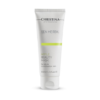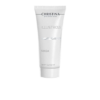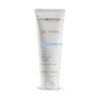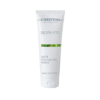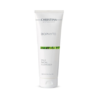
What Are Peptides and Why Do We Need Them?
If you’re reading skincare blogs, you’ve probably heard about peptides. But what exactly are they, and why are they getting so much buzz?
Peptides are short chains of amino acids — the building blocks of proteins like collagen and elastin — that act as “messengers” in your skin, telling cells to repair, rebuild, or calm inflammation. They’re used in topical skincare to support the skin’s structure and repair processes.
As we age and from environmental damage (UV, pollution, stress), collagen and elastin production declines, which leads to wrinkles, loss of firmness, and thinner skin. Many peptides help stimulate these repair pathways or protect skin from further breakdown, making them a useful part of anti-aging and recovery routines.
In this article you’ll learn: how peptides work on facial skin, the benefits they offer, main types and when to use them, how long to expect results, tips for choosing products, and — at the end — how I can help you pick the right peptide strategy.
Let’s dive in.
How Peptides Work on Skin: The Mechanisms
Peptides in skincare usually work in one (or more) of these ways:
• Signaling peptides — they tell fibroblasts to produce more collagen, elastin, or other extracellular matrix components (this is a core route for visible anti-aging benefits).
• Carrier (transport) peptides — they shuttle essential trace elements (for example, copper) into cells; those minerals are cofactors for enzymes that build and stabilize collagen.
• Enzyme-inhibitor peptides — they slow down enzymes (like collagenases) that degrade collagen and elastin.
• Neurotransmitter-inhibitor (neuropeptides) — they reduce muscle contraction signaling beneath the skin (a milder, topical “Botox-like” effect). Evidence suggests benefits for expression lines, though penetration to neuromuscular junctions is limited and results vary.
Note: peptides are relatively small biologically but still larger than many small-molecule actives; formulation, delivery system, concentration, and product stability determine whether the peptide will reach its target and perform well.
Key Benefits of Peptides for the Skin
What peptides can realistically do (supported by clinical and lab data):
• Stimulate collagen and elastin production → firmer, plumper skin.
• Reduce fine lines and improve skin texture and elasticity.
• Support wound healing and tissue repair (useful after procedures).
• Have anti-inflammatory and soothing properties in many formulations.
Peptides are not miracle cures; they act gradually and depend heavily on concentration and formulation quality. Expect incremental improvement rather than overnight transformations.
Major Types / Examples of Peptides — plain text descriptions (easy to copy)
Palmitoyl Pentapeptide-4 (Matrixyl, Pal-KTTKS)
This is a signaling peptide that stimulates collagen production and has been studied in controlled trials. It’s a classic anti-aging peptide often recommended for early to moderate signs of aging (think 30s–50s). The “palmitoyl” chain is added to improve skin penetration and delivery in topical formulas. Clinical studies have shown measurable wrinkle/fine-line reduction with regular use.
Copper Peptide (GHK-Cu)
GHK-Cu is a carrier peptide that binds copper and supports collagen and elastin production, wound healing, and skin remodeling. Several clinical studies reported improved skin thickness, density, reduced laxity, and decreased wrinkle depth after consistent topical use (typically in ~12-week studies). It’s particularly useful for mature, damaged, or post-procedure skin, but product stability and formulation matter a lot.
Acetyl Hexapeptide-8 (Argireline)
Argireline is a neurotransmitter-inhibitor peptide designed to reduce the signals that drive muscle contraction (a topical approach to softer expression lines). Clinical and preclinical data show reductions in wrinkle depth and improved skin elasticity in some studies, though results vary and the ability to reach neuromuscular junctions non-invasively is still debated. It’s commonly used for dynamic (expression) lines like the forehead and crow’s feet.
Who Needs Peptides? When & At What Age
Peptides are versatile and can fit into multiple routines:
• Late 20s–early 30s — good as preventive care to maintain collagen and offset early environmental damage.
• 30s–50s with early signs of aging — ideal for smoothing fine lines, improving tone and texture.
• Mature or post-procedure skin — peptides like GHK-Cu can meaningfully support repair and recovery.
• Sensitive or reactive skin — many peptide formulas are gentle and can be used when retinoids or acids cause irritation.
In short: peptides work across ages, but the specific peptide and formulation should match the skin’s needs and goals.
How Long & How to Use Peptides (Course, Frequency, Integration)
• Consistency matters. Most users see measurable results in about 6–12 weeks of regular use; some clinical trials report benefits in 12 weeks. Don’t expect instant results.
• Frequency: Apply peptide serums or creams once or twice daily as directed (typically after cleansing and before thicker creams or sunscreen).
• Course approach: Many people run a 3–6 month course to evaluate real benefits, then continue, rotate, or layer with other actives.
• Layering: Peptides often play nicely with hydrating ingredients (hyaluronic acid, glycerin) and antioxidants. Be cautious about combining peptides directly with very strong acids or certain unstable high-concentration vitamin C forms — formulation and pH can affect peptide stability.
Why It’s Tricky in the Marketplace & How to Choose Products
You’ll see “peptides” on many labels, but quality varies. Here’s how to pick:
- Ingredient placement: Look for the peptide listed early in the ingredient list (higher concentration).
- Stability and packaging: Prefer sealed, airless packaging or dark, airtight bottles — peptides can degrade with oxygen and light.
- Formulation & delivery: Well-designed carriers and supporting ingredients (antioxidants, humectants) help peptides work better.
- Clinical backing: Brands that publish studies or cite peer-reviewed research are more trustworthy.
- Hype warning: Marketing like “Botox in a bottle” is exaggeration — peptides support and improve, they don’t replicate injections.
Short FAQ (quick copy-friendly answers)
• Can peptides replace retinoids? Not exactly — peptides are gentler and support structure, while retinoids actively speed cell turnover and are stronger for pigment and severe lines. Many experts use both (timed or rotated).
• Are peptides safe? Generally yes; most topical peptides have good safety profiles in clinical testing, but sensitivity is possible with any ingredient. Patch test if you’re unsure.
• How long before I notice changes? Commonly 6–12 weeks; clinical studies often run in the 8–12 week range.
If you want personalized help, I offer consultations for:
• Individualized home-care plans — I’ll build a peptide-forward routine that matches your skin type, age, concerns, and budget.
• Ingredient literacy — I’ll teach you how to read ingredient lists, evaluate concentration signals, and spot marketing hype.
• For cosmetologists — I provide a practical guide to formulas and ingredient functions so you can confidently select and recommend peptide products for clients.
Want help picking the right peptide serum or designing a full home-care plan? Message me for a consultation and I’ll create a tailored strategy you can actually use.




